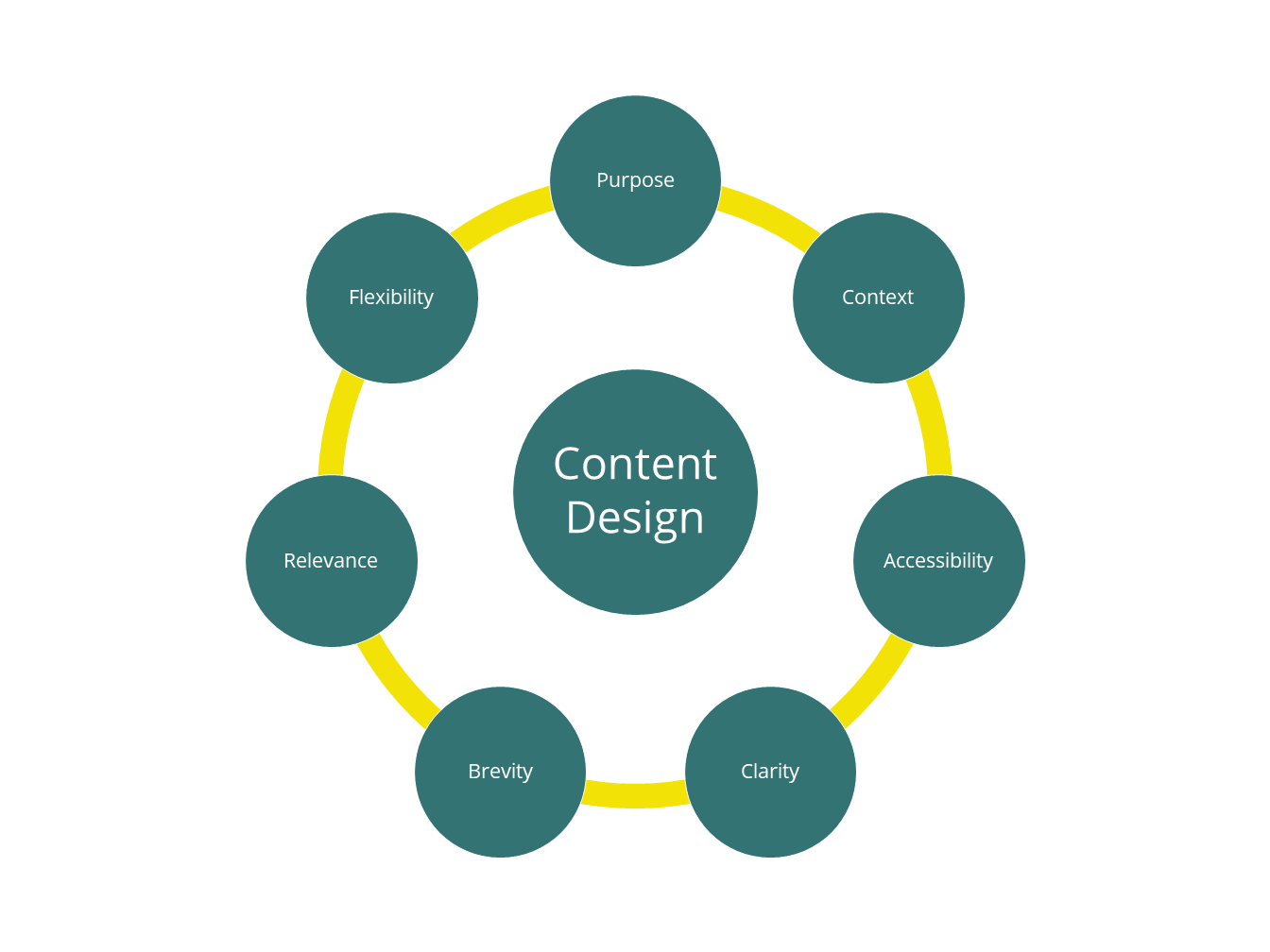Purpose
The first principle is the purpose. There needs to be a reason for what you’re doing. Think about
- what is the problem or challenge you’re trying to solve?
- what does success look like? How will it be measured?
- what experience do you want your users to have?
- what research has been done, or needs to be done?
- what have other people already done?
- what are the risk, constraints or barriers?
Context
The second principle is the context. What are the scenarios that will lead people both to your content and onto another page? In other words, what is (or should be) the user journey?
Accessibility
The third principle is the accessibility. Content needs to be correct and usable for all your website users. Sometimes a picture is worth a thousand words.
Clarity
The fourth principle is clarity. Put simply, use plain English, avoid jargon and ensure your tone match complements your brand and interests your users.
Brevity
The fifth principle is brevity. People can’t digest large chunks of content; less, in most cases, is more. A sentence length of around 25 words is a good starting point.
Relevance
The sixth principle is relevance. Think about your users and what they know (or need to know). Who is your target audience? Put simply you need to understand your users and make sure your content is relevant to both their current and future needs.
Flexibility
The seventh principle is flexibility. Content shouldn’t be static words on a page and it should change. Either because it needs to or because you want to, for example A/B testing or because you’re prototyping a new idea.
Read more about content design
